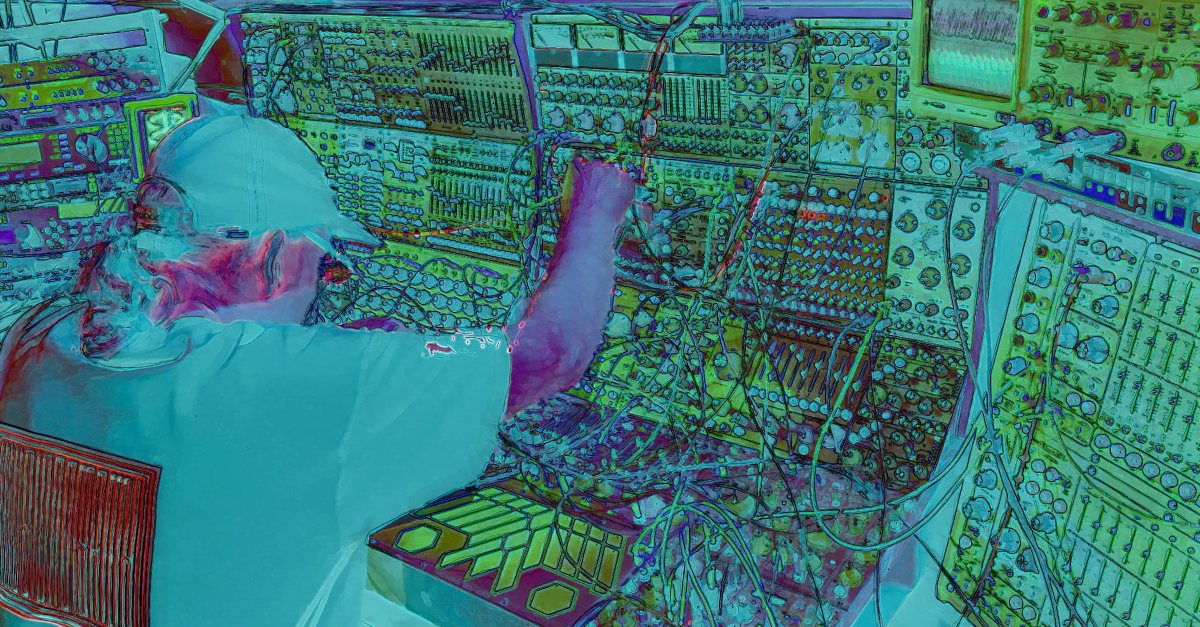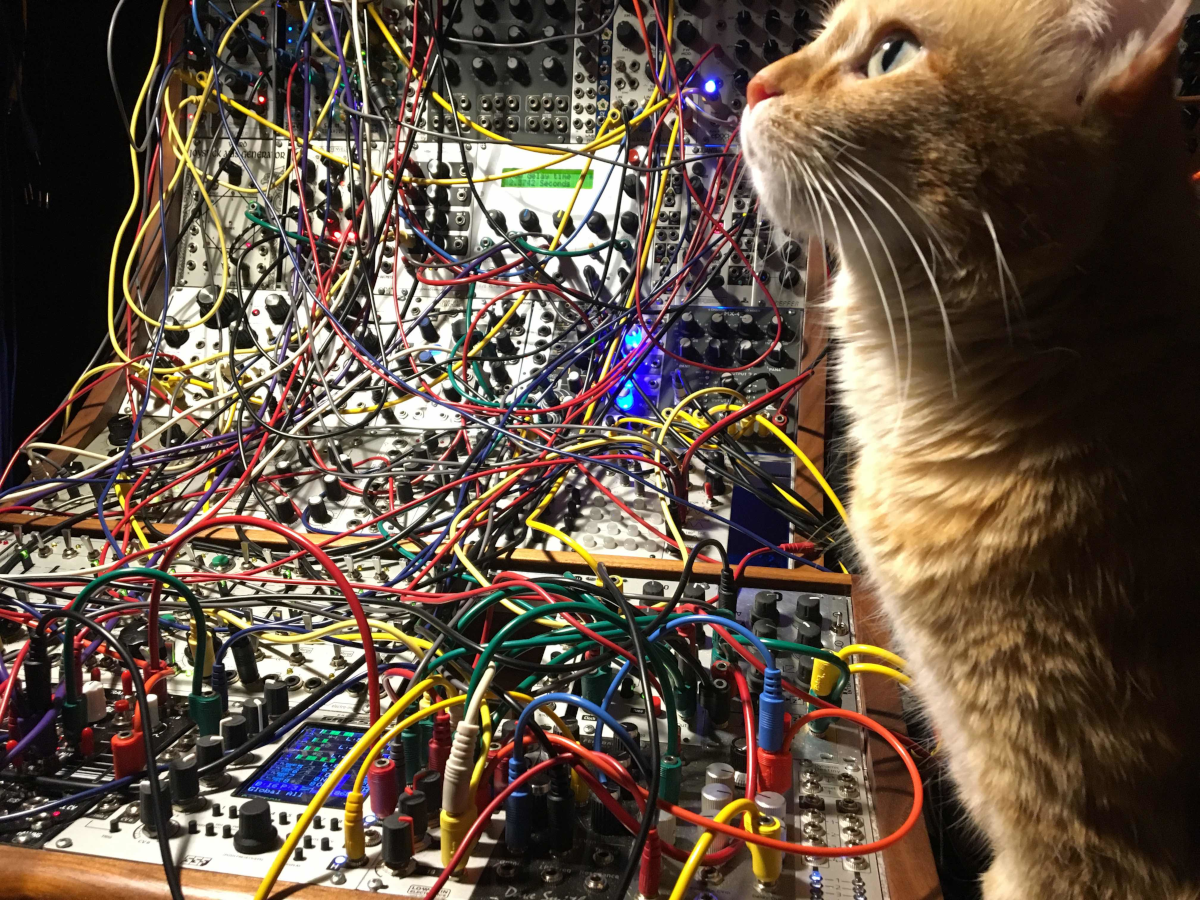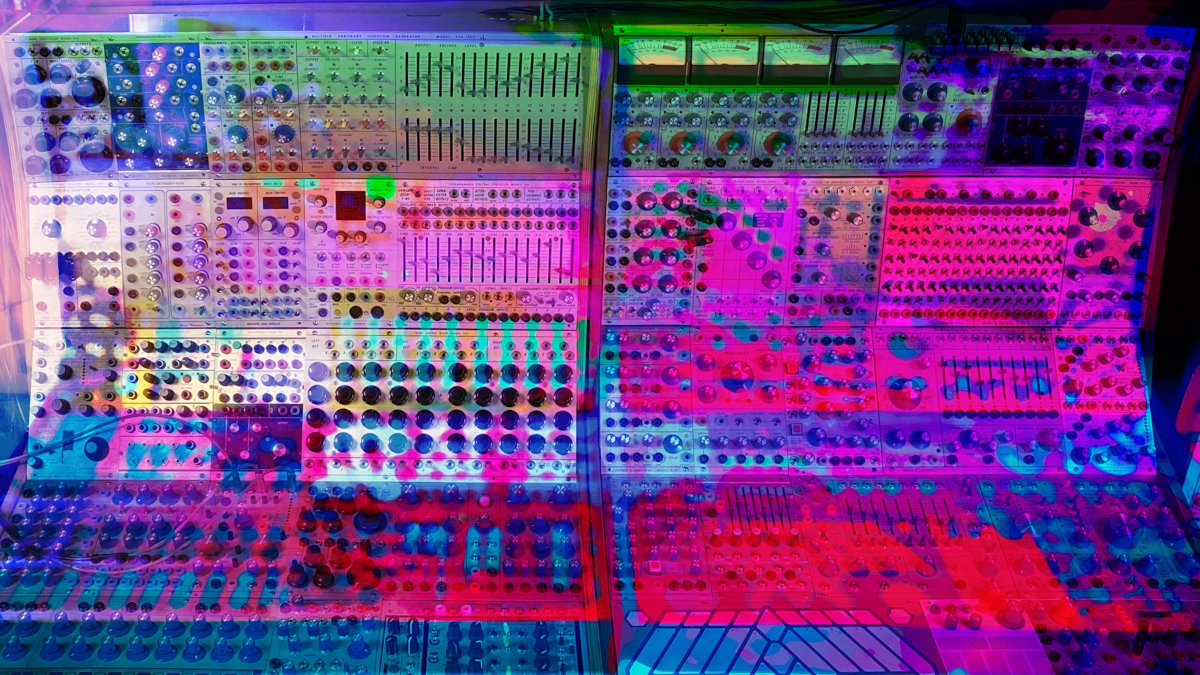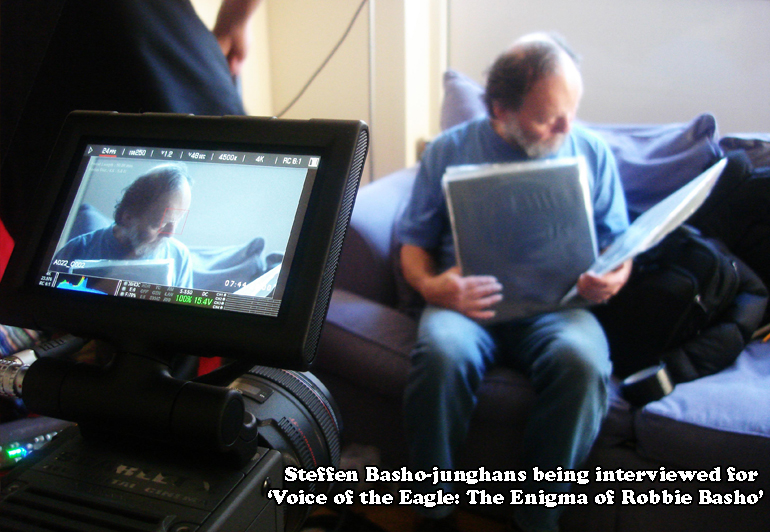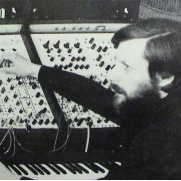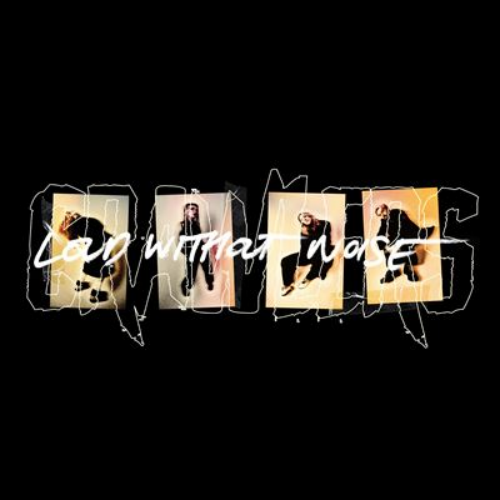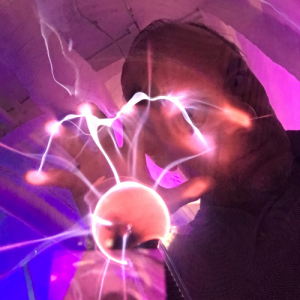 Daniel Burke has been recording and performing music as Illusion of Safety since 1983, with a variety of collaborators joining him along the way. Dormant from 2015, he revived IOS in 2020, continuing the exploration of unconventional sound using unorthodox devices and methods. Daniel’s session for Philippe Petit‘s encyclopaedic ongoing Modulisme project last no less than eight hours, and is a tour de force of experimental music in all its various forms as exemplified by the application of abstracted modular synthesis.
Daniel Burke has been recording and performing music as Illusion of Safety since 1983, with a variety of collaborators joining him along the way. Dormant from 2015, he revived IOS in 2020, continuing the exploration of unconventional sound using unorthodox devices and methods. Daniel’s session for Philippe Petit‘s encyclopaedic ongoing Modulisme project last no less than eight hours, and is a tour de force of experimental music in all its various forms as exemplified by the application of abstracted modular synthesis.
As part of Freq’s continuing collaboration with Modulisme, Daniel outlines how he operates within the ever-fascinating and seemingly infinite possibilities offered by modular synthsisers.
When did you first become aware of modular synthesis as a particular way of making music, whether as part of electronic music in general or more specifically as its own particular format, and what did you think of it at the time?
Early ’70s, I’m maybe 12 or 14 at the time when I heard Switched on Bach and Morton Subotnick’s Silver Apples. Both were very exciting to me. I was growing up listening to rock music, but did always gravitate toward the weird and unusual, and those two got me fired up, although it wasn’t until later that I really understood what was being used to create those works. A bit later, ’74 & ’75, it was Todd Rundgren’s Utopia, Klaus Schulze, and Gong that furthered my interest in those tools and the sounds they conjured. Acid helped me love that sound.What was your first module or system?
I had some experience with traditional synths like the Minimoog, Moog Source, Crumar DS-2, and Roland mono synths before I even thought about a modular. After a lot of research on the Modwiggler forum, I went with a small Doepfer system to primarily process prepared tabletop guitar, including an A-119 external processor and a Plague Bearer distortion in 2011. I was already using the guitar in that way even prior to Jim O’Rourke’s involvement with us (when that was his primary Instrument) after having seen AMM live in 1984 and being blown away by Keith Rowe and his use of that method.
I had more of a personal in depth look at the possibilities for using prepared guitar in tandem with modular when I toured Europe with Kevin Drumm in 2001. He brought his tabletop guitar and a small Doepfer on that tour and it was very inspiring. We did a live recording on that tour at VPRO in Amsterdam that was released by Staalplaat and is available on my Illusion of Safety Bandcamp page.
It is unfortunate that I took so long to actually purchase a modular, but it is what it is. Once I went that way, I rapidly branched out to incorporate more traditional modules in the Eurorack system to work with tones and my appreciation for sequencing and arpeggiations. Thankfully it broke my relationship with the laptop.How long did it take for you to become accustomed to patching your own synthesizer together out of its component parts?
It was pretty easy as I’ve always approached most things in a rudimentary way. Scratching the surface is enough to get interesting sounds and ideas going with almost any tool. And again I had some experience with mono synths, and always liked to set up semi-automatic self-playing motifs, even if I need tape or something to hold down a key and used some kind of looper. The in-depth approach is essential for more complex forms of music than I have ever made. Over time, my patching has become more informed and complex, and it’s exciting too make new breakthroughs and hear the results. The modular is a unique and very sonically rewarding process of discovery.Do you prefer single-maker systems (for example, Buchla, Make Noise, Erica Synths, Roland, etc) or making your own modular synthesizer out of individual components form whatever manufacturer that match your needs.
No preference, both have their benefits. I love the total disparity of the Eurorack options, both in terms of the aesthetics and the components and the way more extensive possibilities in that system due to so much development. Great to see the Buchla system is expanding into new possibilities. It is also a joy to play a unified system that seems to make its own sense in its workflow and provide a more clear path towards the creation of what it is capable of. And the unified aesthetic is attractive too.
East Coast, West Coast or No-Coast (as Make Noise put it)? Or is it all irrelevant to how you approach synthesis?
I like it all and do both depending on the moment. Do I want to hear musicality or mystery? I love hearing and experiencing both. More of the time my interest has been West Coast experimental sound design as I’ve pursued with Illusion of Safety over the years. I always loved beats and techno, but rarely turned on the drum machine, preferring to go outside any kind of musicality or structure. And conceptually to go inside psychologically.I was spurred on early by the music in 2001: A Space Odyssey; that imagery and those sounds made a big impression on me at ten years old and stuck with me. I realised later that powerful provocative sound and image can take me places and I wanted to create those possibilities for myself.
Do you tend to use pure modular systems, or do you bring in outside effect and devices when playing or recording?
There was a time when all of my music was heavy on process and effect. Later, I rejected that and went kind of stark and dry, probably too dry in retrospect. I guess I got tired of the over-use of looping, and echo/delay, and reverb, all of which I loved, but tended to rely on too much. So by the time I first got the Doepfer system, things were pretty dry — which is not always a good thing. Now things have changed again and it’s not so dry and the external effects are more subtle most of the time if I use them.That said, unless the effects are internal, most of my playtime with modular systems are dry, no external processing, as I like to really hear what is coming out of them in a pure uncoloured way. When I am composing and structuring a release it’s a different matter. Ableton Live is a big player in the workflow, using the internal tricks (samplers, looper, effects, and audio/midi conversions and manipulations) that are available there.
Do you find that you record straight with no overdubbing, or do you end up multi-tracking and editing tracks in post-production?
I always end up composing in Ableton. Everything starts with improvisation, laying down tacks and compiling them for later editing, layering, additions, manipulations, and construction. Very little of my output over the last ten years at least is straight live as played. For better and worse, some desire to reach a standard of excellence means all of it involves some further interference.
Do you pre-patch your system when playing live, or do you tend to improvise on the spot?
Its been a long time since I performed live with the modular, and I had used both approaches, but the preference was at least semi-pre-patched and plugging and pulling as needed. I never had the clear minded focus of say Keith Fullerton Whitman, who I saw do that live on more than one occasion, build the patch as part of the performance, absolutely amazing.Which module could you not do without, or which module do you you use the most in every patch?
Eurorack Mungo D0 delay. Its very frustrating, but capable of the tripping magic sounds I love.What do you think that can only be achieved by modular synthesis that other forms of electronic music cannot or makes harder to do?
Fun and wonder. The tactile immediacy, depth, and complexity of sound design possibilities is mostly unmatched. Its easy coming from years of mainly using in the box laptop as a primary tool of creating to fall in love with modular.
When we began IOS in 1983, we were using Radio Shack variable speed tape players and 3.5 second delays as our samplers, using Moogs, prepared tabletop guitars, and various amplified objects as sound sources. Those tools have a lot of tactile pleasures, perhaps as much as the modular. But they have some limits that are surpassed in the modular realm. It is so much FUN to be in front of all these blinking lights, knobs, the limitless sound capability, and the cords, building some amazing patch from scratch that creates such unique sounds.
Have you used various forms of software modular (eg Reaktor Blocks, Softube Modular, VCVRack) or digital hardware with modular software editors (eg Nord Modular, Axoloti, Organelle), and if so what do you think of them?
Just recently I started using VCVRack and it’s great. Sounds fantastic and easy to build what you want at no cost at all, and an invaluable tool for learning about modular patching. Have not tried any of the others mentioned, but I have in the past used Reaktor 5 and Absynth to dig in and build some great devices, love the Native Instruments software.What module or system you wish you had?
Arp 2600.Have you ever built a DIY module, or would you consider doing so?
No, I am not good with building, only play.
Which modular artist has influenced you the most in your own music?
In most of my music, not a modular artist but Andrew McKenzie, The Hafler Trio. Modular; would say Steve Hillage / Miquette Giraudy and Malcolm Cecil, Klaus Schulze, and Chris Carter.
Can you hear the sound of individual modules when listening to music since you’ve been part of the modular world — how has it affected (or not) the way that you listen to music?
I don’t think I could identify individual modules, maybe certain systems. I do listen to a lot more music and sounds that are created with modular now . It doesn’t even have to be music. I love noodles and experiments. From 2013-2016 I had a radio show Patchworks in Chicago on WNUR focusing on synthesizers exclusively that used released music, various historical dialog, and a lot of noodles (often my favourite parts) from the citizens of the Modwiggler forum. All eighty-four of those shows are archived on Mixcloud and make a fun listen.What have you been working on lately, and do you have any upcoming releases or performances?
No performances planned. Chicago area sound artist and Somnimage label head Mykel Boyd and I are completing our overdue collaboration based on edits and processing of our live performance together from something like a decade ago. I have finished a new IOS record, plenty of synth on it (Eurorack, Buchla, Serge, and the Roland Jupiter 6!), working on the graphics and videos for it now.
I have a forthcoming collaboration I did with Z’EV, some Eurorack on that one, completed in 2012 and being released by No Part Of It that is on its third test pressing and delayed due to a few issues with the vinyl we are trying to work out. I have a synthesizer-based project called Soundoferror, and just released a new mainly Buchla album called “Religious Sounding Noises on Bandcamp.Can you outline how you patched and performed your Modulisme session?
Recorded late 2011-2012, the raw tracks are about eight hours of live performances recorded into Ableton Live using my first Buchla acquisitions: 259r (the main primary sound source), 292c, 266, 281, Soundscape Processor/Generator filter (by (Lassence/Vedicscapes), Dual Quad LFO (Lassence/Vedicscapes), 297 Phase Shifter, Wave Processor Model 45 (Vedicscapes, of a Serge design), Modcan 54B dual sequencer (bananafied), and some utilities like quad Joystick, ear drill module modules, mixers, and some Jason Butcher designs like the CVTG and 256ish, plus a Euroblade adapter with both the Mungo D0 and Chronoblob delays, and a mixer for feedback.The Euroblade adapter w/Chronoblob, mixer and Mungo D0 delays are the biggest part of the sound of these recordings. Lots of feedback processing the 259 with the Lassence/Vedicscapes filter. Then over time editing and re-composing these live takes into the tracks heard here. The final album release, Focused Systems Approach #1: [Buchla/Eurorack] >Margins Of Error is probably 40% heard as played with no manipulation, edits, or additions, and the other 60% edited and constructed. There is no added elements or external treatments on the record, all source material is from the system described. How it was patched exactly was never documented, but the accompanying video release Visions of Error may reveal something.
Who would your dream collaborator be for a Modulisme session or otherwise?
Eurorack with Keith Fullerton Whitman and Richard Devine. A Serge / EMS-focused collaboration with Jim O’Rourke. Another record with my friend Thomas Dimuzio would be great to do. We have performed live together many times, and have a few CD releases together, but those are from many years ago and with our old methods culled from live performances. It would be cool to do something edited and composed exclusively with recordings of the Buchla systems together. Jason Soliday is a Chicago sound artist who introduced me to the forum who always presents challenging, powerful live modular performances. We have performed together but never did any recordings.*
